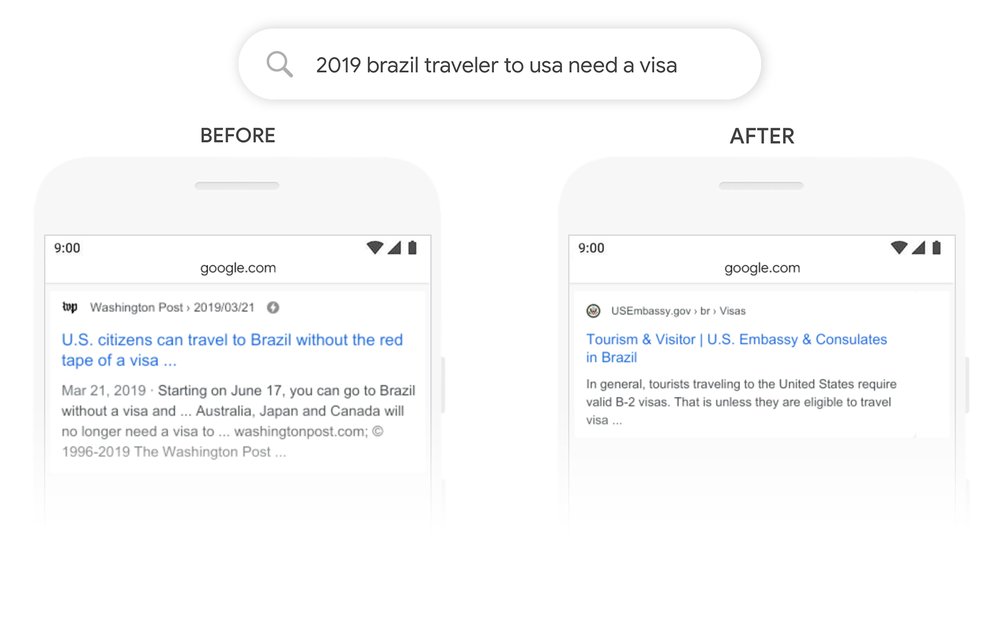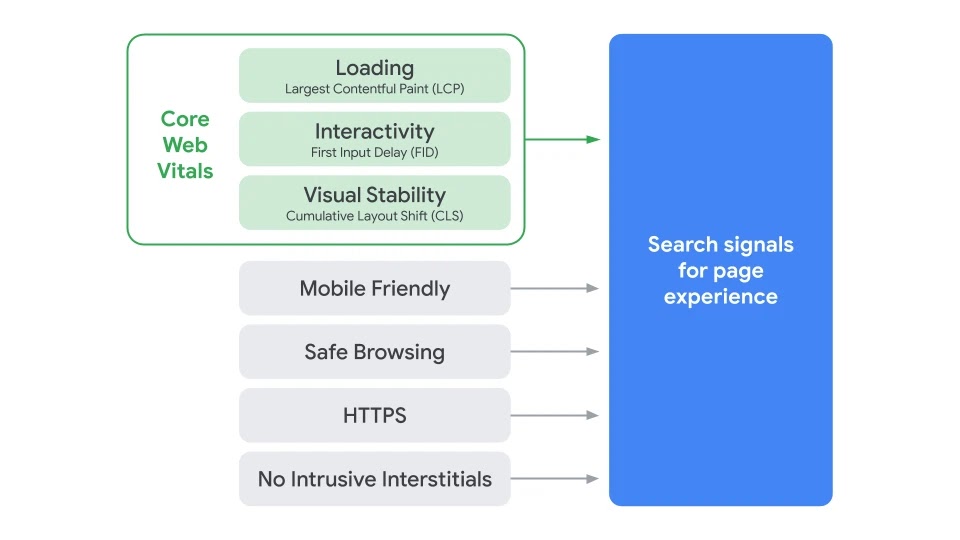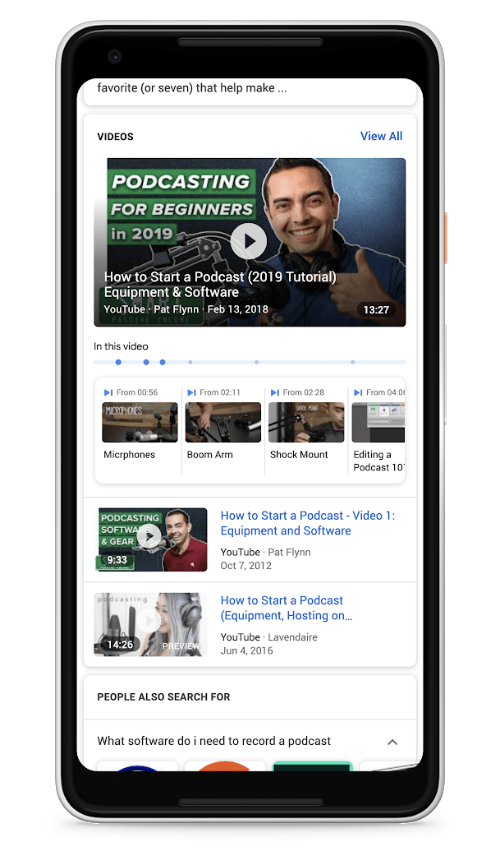How to Prepare for Google’s Algorithm Changes

Another new year and another round of big changes to Google’s algorithms. Like in many years past, 2020 saw some massive leaps in the technology to assist every day users navigating through the massive amount of information available on the internet.
And like in many years past, you (SEO’s, marketers, business and website owners) are going to need to roll with the changes if you want to continue to rank to those everyday users.
Here are the big search engine changes to watch for and what you can do about them.
1. BERT
Bidirectional Encoder Representations from Transformers sounds so formal, so Google mostly just calls this fellow BERT.
BERT is the newest in natural language processing technology, allowing Google Search to better understand queries from visitors. In the past, it impacted about 10 percent of searches, but moving forward, is expected to impact every search. Now considered “fully integrated,” BERT is likely to change the SERPs fairly dramatically.
You can get on BERT’s good side by developing very specific content for it to examine. Broader topics that might have once been useful for getting traffic may no longer rank at all, instead, more narrow topics will be your best bet.
For example, a user searching for instructions to make “dehydrated lemon slices” may no longer see pages about “dehydrated citrus slices” unless that page also contains subheaders including the phrase “dehydrated lemon slices.”
Really specific content is going to matter here. If you see that you’re not ranking for keywords you expected to rank for, try creating content specific to that long tail keyword. This will both better serve the user and give BERT something a bit more substantial to chew on.
2. Core Web Vitals
Coming soon to the Google SERPs near you is a signal that’s incorporating something called Core Web Vitals. Core Web Vital measures the user experience with a web page, using metrics like Largest Contentful Paint (LCP), First Input Delay (FID), and Cumulative Layout Shift (CLS).
If your site loads slowly, experiences issues with interactivity, or lacks visual stability, it’s going to hurt, as this is expected to be a major ranking signal in the near future.
You aren’t going to be able to fix an otherwise poor page with high scores in Core Web Vitals, but if your otherwise good site is lacking these things, you may struggle to find it on Page 1 of the SERPs.
Your Google Search Console account will show you any Core Web Vital errors your site may have. Use this tool to ensure you’re doing all you can to clear up any issues like these:
- Speed LCP up to under 2.5 seconds per page on your site by reducing oversized images, removing unnecessary scripts, removing large page elements, or changing hosts.
- Pages with logins or sign ups should be paying close attention to how long the interactive elements load, and speed them up as much as possible.
- Minimize javascript usage, remove those third-party scripts, and take advantage of browser caching to improve your FID.
- Reduce your CLS by using specific dimensions for images and other media, reducing the number of ads on your site, and ensure that those ads are in reserved spaces so they don’t change the layout as they load.
- Make sure that you add any new elements below the fold, so the content users are already looking at isn’t disturbed.
3. Passages
If you’ve noticed Google’s quick answers lately, you may have seen that there are answers being pulled deeper and deeper into pieces of content deemed useful.
In the past, these were pulled by the relevance given to the post by signals like titles and headings, even if the post couldn’t actually answer the question presented. Although it’s anticipated to only affect about seven percent of queries, the attention to passages means that Google is doing deeper analysis of content with search intent in mind.
For users, that means being able to get quick answers that are actually answers to their questions, every time.
You can improve your site’s appearance in Passages by including several subtopics in longer posts, even if each subhead just contains a small amount of information. Be sure to keep subheads clear and specific.
However, do note that because your post will be appearing in a snippet view that doesn’t require the user to actually visit your site to find the information they need, you’re unlikely to see direct increases in clicks or traffic.
4. Subtopics
More neural nets are working on better understanding subtopics under broader subjects, in order to present a better mix of websites for vague search queries with no clear intent.
This is both good and bad for sites, depending on how they’re using keywords. For some time, broad short tail queries have been difficult to rank for smaller brands, and that’s going to continue as a trend. In fact, we expect posts about broad topics to lose some ranking to the mix of more specific posts and sites.
The main way you can make an impact with subtopics is by focusing on diversifying your keywords. We’ve been saying this for over a year, but if you didn’t hear it the first several times, listen closely now. 😉
Find better angles for your broad topics. Don’t just write about “pasta meals,” create a post about “high protein pasta dinner in 30 minutes,” or “easy pasta sauces for beginning cooks.”
5. Key Moments in Videos
Google’s looking more closely at your videos to better understand key moments. By doing this, the search engine should be able to identify and create chapters that give users the ability to navigate directly to the spot in the video they want.
Although only about 10 percent of searches will use this technology, it’s definitely one to watch as Google grows more sophisticated about handling video content.
Since Google intends to include more diversity in content in the SERPs, your Key Moments could wildly impact rankings. Make sure that you’re including videos in content where they’re applicable, including in step-by-step instructional materials. Structure your videos well to make it easier for Google to break down what it’s seeing, as well as include written content.
6. Spelling
Although the changes to Google Search’s understanding of misspelled words doesn’t really impact the SERPs, it’s important to note it. Because one in 10 queries are misspelled, Google has harnessed a deep neural net to help it better understand user intent and correct spelling errors. You’re really not going to do much about this, but it may reduce your need to try to capture misspelled versions of your best keywords.
These are the big changes to look at as of now, but there are always more changes around the bend. Keep an eye on this blog for updates as we see them coming.






